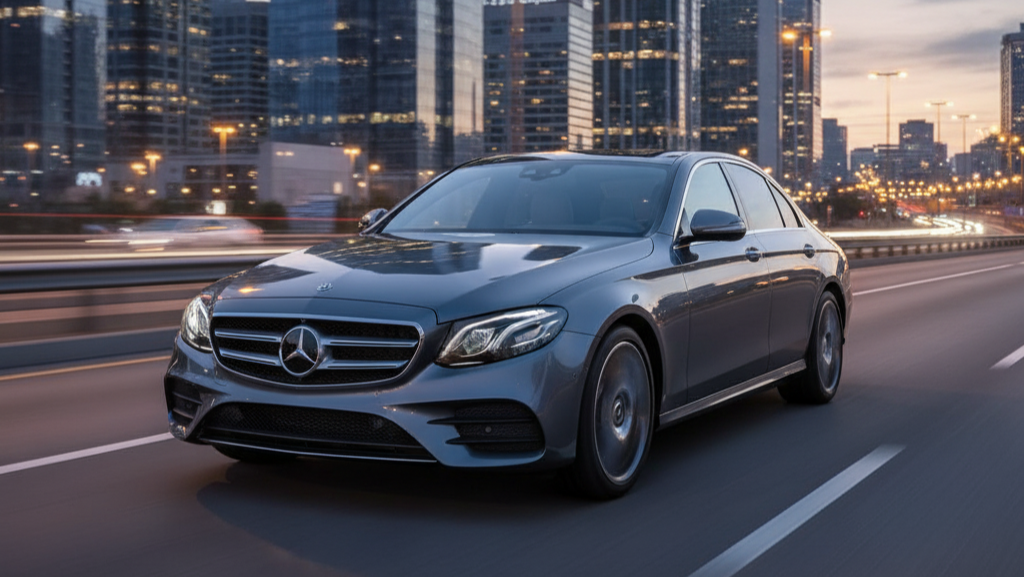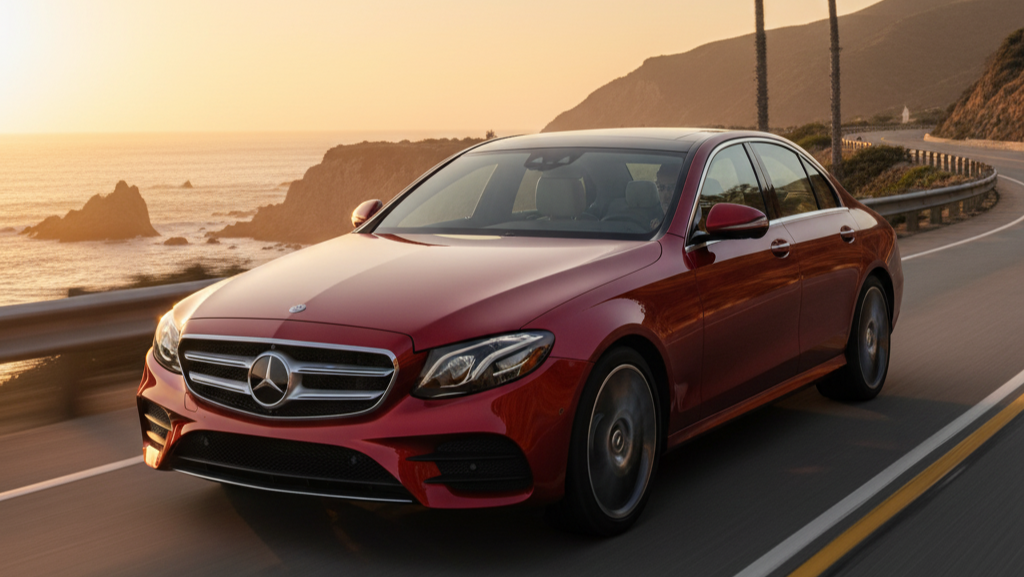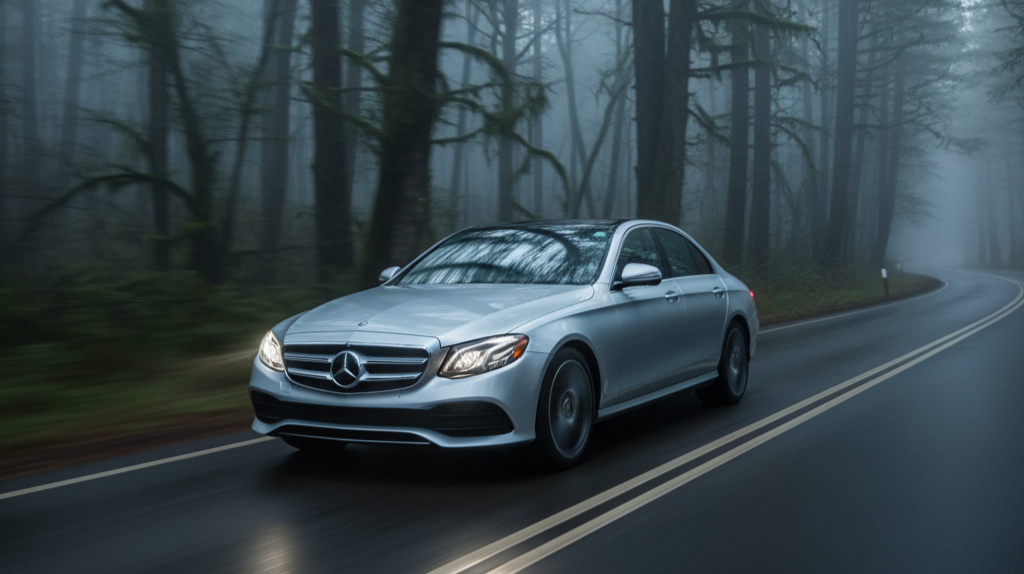How Long Does a Mercedes-Benz E-Class Last?
Published on: Fri Nov 08 2024
Practical Information Summary: Mercedes-Benz E-Class
Overview
The Mercedes-Benz E-Class is the quintessential mid-size luxury vehicle, serving as the heart of the Mercedes brand. It represents a significant step up from the C-Class in terms of space, comfort, material quality, and technological sophistication. Often considered the default choice for executives and discerning families, the E-Class is engineered for long-distance comfort and durability. This guide will focus on the highly regarded W212 (2010-2016) and the modern, tech-focused W213 (2017-2023) generations, outlining the practical aspects of owning this benchmark luxury sedan.
Ownership Costs
As a premium, mid-size luxury car, the E-Class has substantial ownership costs that are notably higher than the C-Class and require a serious financial commitment.
Vehicle Price
- New (W214 generation): A new E350 sedan starts at approximately $63,000, with the E450 starting closer to $70,000. Well-optioned models with popular packages can easily approach $80,000 or more.
- Used (W213 generation, 2017-2023): Early E300 models can be found from $25,000-$30,000. The more desirable facelifted models (2021+) with the MBUX system and mild-hybrid engines command $40,000-$55,000.
- Used (W212 generation, 2010-2016): This generation is known for its durability and offers fantastic value. Facelifted models (2014-2016) are particularly sought after and can be had for $15,000-$25,000 depending on mileage and condition.
Taxes, Insurance, and Fuel
- Taxes: The high value of the E-Class leads to significant annual registration and property tax bills.
- Insurance: The E-Class is expensive to insure due to its high value and the cost of its advanced components (e.g., Multibeam LED headlights, driver-assistance sensors). Expect annual premiums in the range of $2,000-$3,500.
- Fuel Economy:
- E300/E350 (2.0L Turbo 4-cyl): Averages a respectable 23-26 MPG in mixed driving.
- E450 (3.0L Turbo 6-cyl): Averages around 22-25 MPG, offering more power with a minimal fuel economy penalty thanks to mild-hybrid tech in later models.
- Fuel Type: All gasoline models require premium (91 octane or higher) fuel.

Maintenance
Like the C-Class, the E-Class follows the A/B Service schedule. However, due to its larger engines and more complex systems, costs are generally 10-20% higher.
Routine Service (A & B)
- Service A: A minor service including an oil change and various inspections. Cost: $300-$450 at a dealer.
- Service B: A major service including the A-Service items plus cabin/engine filter replacements and more detailed checks. Cost: $600-$900 at a dealer.
- Independent Specialist: Using an independent shop can lower these costs significantly, to around $200-$280 for an A-Service and $400-$600 for a B-Service.
Other Key Maintenance Items
- Transmission Fluid: A fluid and filter change for the 7G-Tronic or 9G-Tronic transmission is recommended every 60,000 miles. This is a critical service for drivetrain longevity. Cost: $600-$900.
- Spark Plugs: V6 and V8 models require more plugs, increasing the replacement cost. Expect to pay $400-$700 every 50,000-60,000 miles.
- Brakes: The E-Class is a heavy car, leading to steady brake wear. A full front and rear brake job can cost $1,500-$2,500 at a dealer.

Reliability & Common Issues
The E-Class has a reputation for being more robustly engineered than the C-Class, often referred to as being “built to a standard, not a price.” With consistent maintenance and highway usage, 200,000+ miles is achievable. However, its complexity means that when things do go wrong, they are expensive.
Common Issues (W212 & W213 Generations)
- Airmatic Suspension: This is a primary point of failure on equipped models. Leaking airbags and failing compressors are common on higher-mileage cars. Given the E-Class’s heavier weight, the system is under more stress. Repairs are costly, at $1,500+ per corner.
- Engine and Drivetrain Mounts: The hydraulic engine and transmission mounts will wear out over time, typically around 80,000-100,000 miles. This results in increased vibration in the cabin, especially at idle. Replacement is a common maintenance item. Cost: $800-$1,500.
- M276 V6 Engine (W212/W213): Generally a reliable engine, but can suffer from oil leaks from the camshaft position sensors and timing chain cover. High-pressure fuel pump failure is also a known, though less common, issue.
- Electronic Control Units (ECUs): The E-Class is a network of dozens of computers. While generally reliable, failure of a key module (like the SAM module, or signal acquisition module) can cause a cascade of bizarre electronic issues and is expensive to diagnose and replace.
- W213 Infotainment/Digital Dash: The large dual-screen setup is impressive but can be a source of issues. Some owners have reported screen delamination or software glitches requiring dealer intervention. An out-of-warranty screen replacement would be exceptionally expensive.
- 48V Mild-Hybrid System (2019+): Newer models with the “EQ Boost” system have had reports of 48V battery failures. This can leave the car completely immobile and requires a very expensive battery replacement. This is becoming a point of concern across many German brands using similar technology.

Used Market Guide
The E-Class depreciates heavily, making it a fantastic used buy for those seeking supreme comfort and luxury for a fraction of the original price. The key is finding a well-maintained example.
What to Look For
- Comprehensive Service History: This is non-negotiable. A full digital service record is a must. An owner who also keeps a folder of receipts from a reputable specialist is ideal.
- Pre-Purchase Inspection (PPI): A thorough PPI from a Mercedes specialist is critical. They must check the Airmatic system for leaks, scan all computer modules for faults, and check for the common oil leak points.
- W212 vs. W213: The W212 (especially the 2014-2016 facelift) is often lauded as one of the last “bank-vault” Mercedes for its perceived durability and less complex electronics. The W213 offers a much more modern experience with its stunning interior and advanced tech but comes with higher potential electronic repair costs.
Buyer’s Checklist
- Suspension Sag: View the car from a distance on level ground. Does it sit perfectly level? Any sagging indicates an Airmatic leak.
- Cabin Vibrations: At idle during a test drive, feel for any excessive vibration through the steering wheel or seats, which could indicate worn engine mounts.
- Full Electronic Test: Spend at least 15 minutes testing everything. Navigate through all menus on the infotainment screen, test the heated/ventilated seats, check the dynamic seat bolsters (if equipped), and test all driver-assist systems.
- Check for Moisture: Check the trunk area (under the floor) and passenger footwells for any signs of moisture, which could indicate a leaking sunroof drain or body seal.
Verdict
The Mercedes-Benz E-Class is a masterclass in luxury, comfort, and engineering. It provides a serene and isolated driving experience that few cars can match. As a used vehicle, it offers an incredible amount of car for the money, but this value is balanced by high maintenance costs and the potential for very expensive repairs. It is not a car to be bought on a whim or a tight budget. For the discerning buyer who does their homework, gets a PPI, and budgets accordingly for upkeep, a used E-Class can be one of the most satisfying and comfortable vehicles they will ever own.